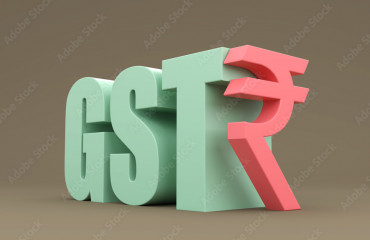
The ‘Good and Simple Tax’, which completely revamped India’s indirect tax structure, completes six years on 1 July. At the time of its inception, some of the objectives envisaged were: Removing the multiplicity of taxes, mitigating their cascading effects through a seamless flow of credit, widening the tax base, reduction of the cost of goods and services to consumers, simplification of the compliance mechanism, and bringing efficiency as well as transparency with the help of increased use of technology.
The 'Good and Simple Tax', which completely revamped India's indirect tax structure, completes six years on 1 July. At the time of its inception, some of the objectives envisaged were: Removing the multiplicity of taxes, mitigating their cascading effects through a seamless flow of credit, widening the tax base, reduction of the cost of goods and services to consumers, simplification of the compliance mechanism, and bringing efficiency as well as transparency with the help of increased use of technology.
Six years back, taxpayers were struggling with different kinds of indirect tax laws at the Centre and states, with each law having a different compliance mechanism. The goods and services tax (GST) regime has made compliance much simpler for taxpayers by subsuming many indirect tax laws and bringing uniformity in the tax law as well as procedures. It brought the entire compliance process under one pan-India GST Network.
Over the last six years, the governments at the Centre as well as states have made efforts to reduce the compliance burden through changes in the legal framework and an extensive use of technology. The quarterly returns with monthly payment (QRMP) scheme brought big relief for small and medium taxpayers by allowing the filing of returns once in a quarter while still passing on the input tax credit every month. A 'nil' return filing by just sending an SMS and a yearly return for taxpayers availing of the composition scheme reduced the compliance burden for small taxpayers.
Online filing and sanction of refunds made the refund process much simpler and faster. The dispute resolution process has been made online. An amnesty scheme was brought by the waiving or capping the late fee for delay in the filing of returns to help taxpayers. There has been an overall reduction in the incidence of tax on goods and services consequent to the introduction of GST.
The auto drafted input tax credit (ITC) statement in Form GSTR-2B has been made available to the taxpayer, showing all data regarding ITC available. The auto population of ITC and liabilities in GSTR 3B (payment return) has made return filing much simpler. These steps coupled with the sequential filing of GST returns, the linking of GSTR 3B with the filing of GSTR 1, and Aadhar authentication of registration have helped both the taxpayers and tax administrations to improve compliance.
The unified e-way bill platform has considerably reduced the lead time and costs of supply chain for taxpayers and at the same time helped the tax administration track the movement of goods and detect tax evasion. The number of e-way bills generated has increased from 5.46 crores in June 2021 to 8.81 crores in May 2023.
E–invoicing has helped taxpayers automate the tax processes. It has made the filing of GSTR1 (return for outward supplies) much easier for taxpayers by auto populating the data. It has resolved a major gap in data reconciliation and reduced mismatch errors, made it easy to check the genuineness of suppliers, and has also helped prevent tax evasion. The e- invoicing limit, which initially started for taxpayers with a turnover above ₹500 crore from 1 October 2020, was reduced to ₹10 crore from 1 October 2022 and was further reduced to ₹5 crore from 1 August 2023. In October 2020, the number of e-invoices generated stood at 4.95 crore with an average value of ₹16 lakh per day. This has risen to 18.27 crore invoices in May 2023 with an average value of ₹58.95 lakh per day. The GST Network has been able to handle this increase very well.
Governments have come up with regular circulars and clarifications on important issues to bring clarity and reduce litigation. The tax administrations, both at the Centre and states, have used advanced data analytics and artificial intelligence tools for the scrutiny of GST returns, audit and anti-evasion efforts.
Better tax compliance and an increase in economic activity has led to robust GST collections. The average monthly collections, which were at ₹898.85 billion in 2017-18, reached ₹1.505 trillion in 2022-23. The monthly collections touched a record ₹1.87 trillion in April 2023. The tax base has increased to 1.39 crore at the end of May 2023.
Thus, after six years, GST has to a great extent been able to achieve the objectives set at the time of its rollout. There could still be some areas that need to be attended to. One area of concern for taxpayers is litigation and the delay in the setting up of GST tribunals. The tribunals are likely to start soon. The endeavour now should be to reduce litigation and make compliance faceless and contactless to make it taxpayer friendly. The GST regime has created an ecosystem of transparency and trust, which has helped promote voluntary compliance by taxpayers. The governments, both at the Centre and states, are continuously striving to resolve contentious issues through discussions in the GST Council meetings. So far, 49 GST Council meetings have been held and all decisions except for one have been taken by consensus among the Centre and states, which is an excellent example of cooperative federalism. The Good and Simple Tax has successfully completed six years. It will evolve further and make India's indirect tax regime more successful in the coming years.
